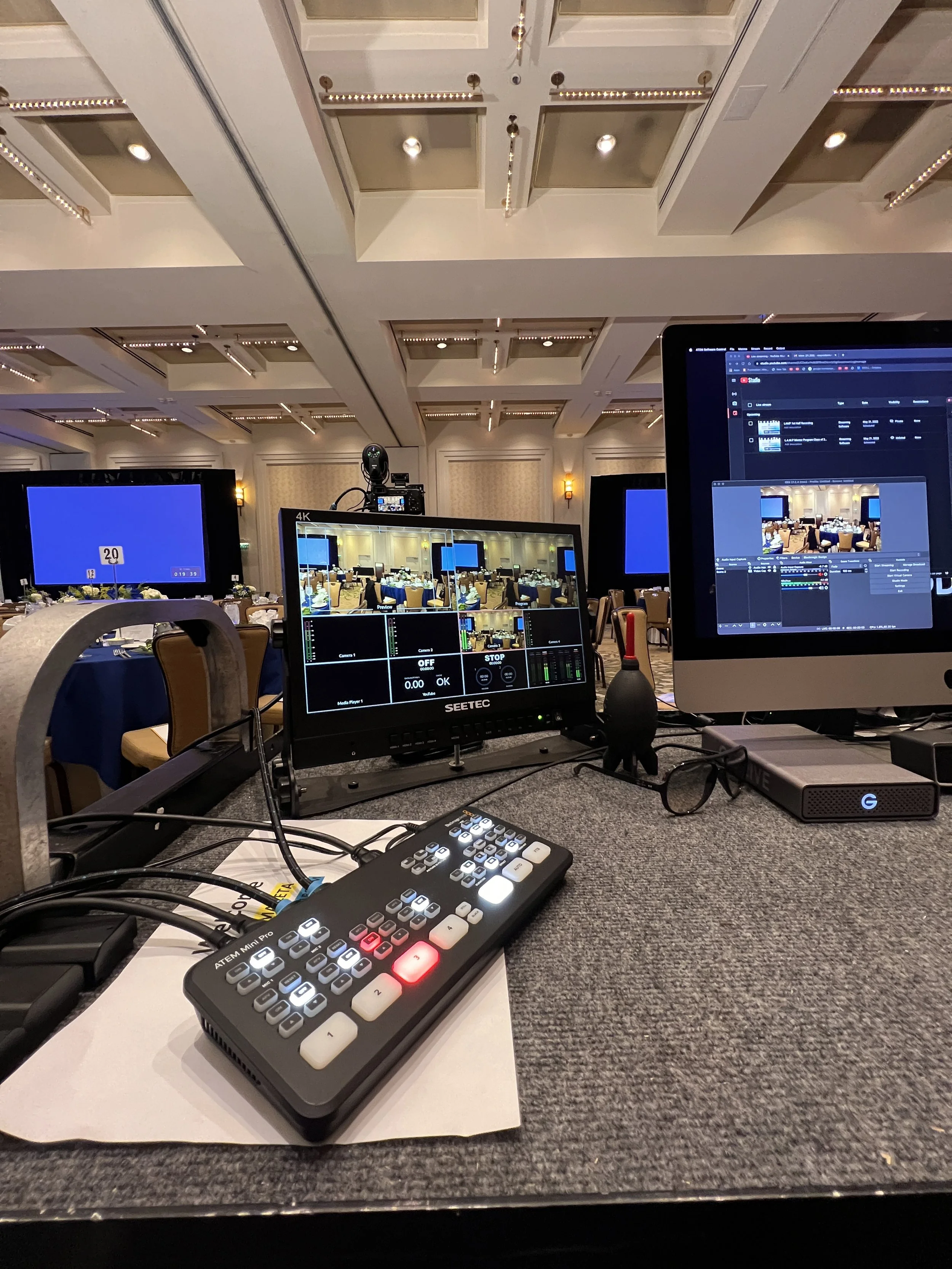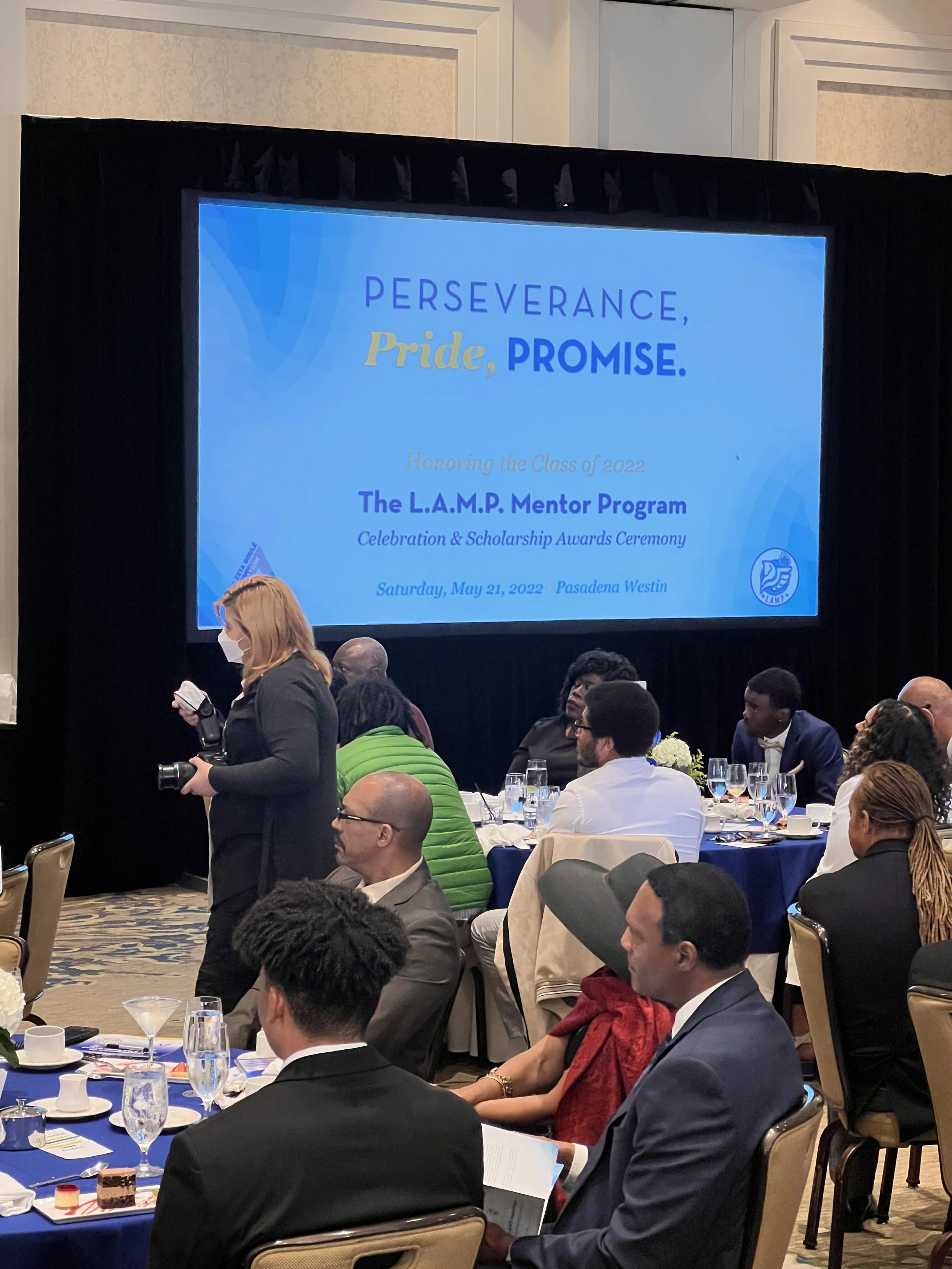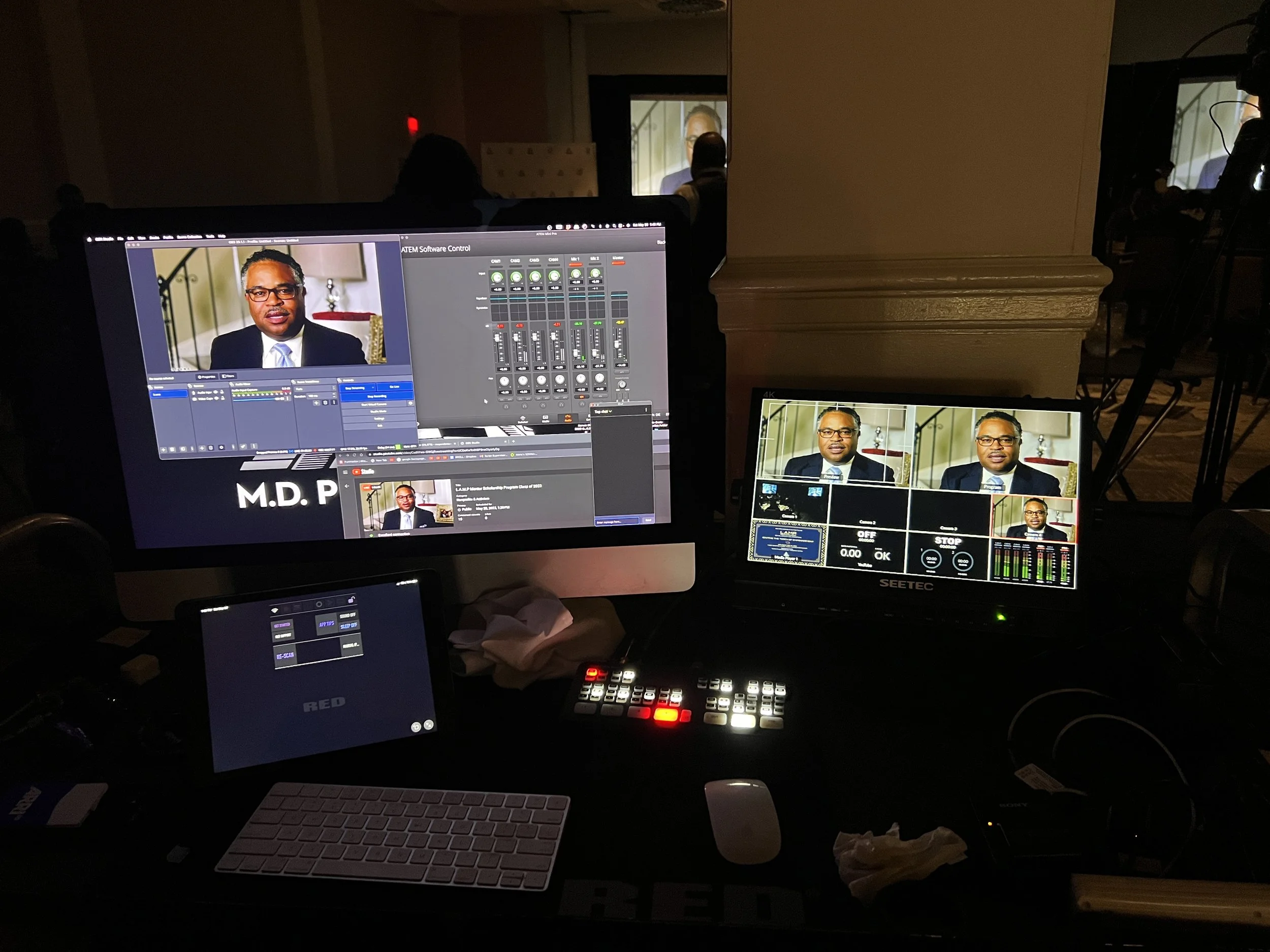Live Event Streaming in 2025: How Professional Multi-Camera Production Is Transforming Hybrid Events Across Southern California and Beyond
Over the past few years, live event streaming has shifted from an optional enhancement to an essential part of how organizations communicate. Nonprofits rely on it to reach donors who can’t attend in person. Cities use it to share community celebrations with residents at home. Corporate teams stream announcements to distributed workforces. And small businesses now turn to professional streaming to look polished, credible, and on-brand.
In 2025, hybrid events are the new standard. And with that shift comes a higher expectation for production quality. Today’s audiences expect reliable audio, cinematic visuals, and seamless switching that feels closer to a TV broadcast than a simple webcam feed. Organizations no longer want a phone on a tripod. They need clean audio, multiple camera angles, smooth transitions, and a professional broadcast that reflects the importance of the event.
This is where full-service streaming makes all the difference and this guide breaks down how live event streaming has transformed, what modern viewers expect, and how a well-executed multicam setup (with optional drone coverage) can elevate any event.
Why Organizations Are Investing in Professional Live Streaming
While DIY streaming tools exist, they fall short for events where clarity, quality, and professionalism matter — especially when attendance, donations, or public perception are on the line. Organizations are turning to experienced production teams because:
They need to reach people who can’t attend.
Nonprofit donors, remote employees, and community members often want to participate but can’t be on-site. Streaming gives them access in real time.
They want a show that looks polished — not like a phone on a tripod.
Multi-camera setups, controlled lighting, professional audio, and live switching make a huge difference in how the event feels.
They don't have the staff, equipment, or time to run a broadcast themselves.
Even small events have moving parts. A dedicated crew ensures the stream runs smoothly while the client focuses on the program.
They want recordings for marketing, recap videos, and archival use.
High-quality footage becomes valuable content long after the event ends.
This is why professional streaming has become a foundational part of modern events.
Modern Expectations: What a Professional Live Stream Includes
A 2025 audience expects a live stream to feel as seamless and engaging as the event itself. A professional setup, like ours at Los Angeles Aerial Image, typically includes:
Multi-camera coverage to capture speakers, audience reactions, stage angles, and detail shots
Broadcast-quality audio, including lavalier mics, handhelds, and mixed audio feeds
Live video switching for smooth transitions, picture-in-picture, split screens, and dynamic presentation
Custom graphic overlays such as lower-thirds, titles, sponsor logos, and countdowns
Platform streaming to YouTube, Facebook, LinkedIn, Zoom, or private portals
Recording for post-production, social media edits, and archival viewing
Optional drone integration for outdoor events where aerial coverage enhances storytelling
This combination creates a viewing experience that feels intentional, engaging, and polished, ensuring that your livestream reflects the professionalism and significance of your event.
The Role of Drone Coverage (Optional but Powerful)
Not every event needs drone footage — particularly indoor galas, conferences, or meetings. But for outdoor events, a drone can add cinematic context and energy.
Drones are most commonly used for:
Establishing shots at the start of a stream
Wide overhead views of large crowds or outdoor venues
Cinematic b-roll captured before the event and incorporated into the broadcast
Live aerial feeds, when a client requests real-time drone coverage
Because drone use depends on location, airspace, safety considerations, and client goals, it’s always included only by request and planned in advance. For example, during the City of San Dimas holiday tree-lighting ceremony, aerial footage helped show the scale of the event and added a dynamic opening shot to the broadcast.
Real-World Event Types That Benefit From Professional Live Streaming
Professional livestreaming is now being used across nearly every industry. Some of the most common events include:
1. Nonprofit Galas and Fundraising Events
Live streaming helps reach donors who can’t attend in person, increases participation, and expands the storytelling impact. Many nonprofits now see hybrid events as a core fundraising strategy rather than a temporary pandemic solution.
2. City & Community Events
Tree-lighting ceremonies, ribbon cuttings, community forums, parades, police department updates — cities are using streaming to improve transparency and accessibility for residents.
3. Corporate Announcements & Town Halls
Companies streaming to remote or hybrid teams need professional reliability, clear audio, and a cohesive visual experience that reflects their brand.
4. Educational, Religious & Cultural Programs
Schools, churches, and cultural organizations use streaming to reach broader audiences and ensure memorable moments are documented.
5. Small Business Events
Local businesses increasingly stream product launches, grand openings, workshops, or behind-the-scenes events as part of their marketing strategy.
Hybrid attendance is here to stay — and each of these event types benefits from a polished, consistent, reliable broadcast.
The Measurable Benefits of Professional Live Streaming
High-quality broadcasts create meaningful outcomes:
• Increased Attendance
Hybrid events allow both in-person and remote participation, leading to higher turnout.
• Greater Donor and Audience Engagement
Nonprofits often see increased online contributions when the experience is professional and easy to follow.
• Accessibility for All Audiences
Remote viewers can join regardless of distance, mobility, or schedule constraints.
• Evergreen Replay Value
Recorded streams can be used for marketing, social media, training, or archival purposes.
• Strengthened Community Connection
Cities and organizations use streaming as a tool to keep the public informed and involved and the impact extends far beyond the event itself.
Why Southern California Organizations Prefer Professional Crews
Serving Los Angeles, Orange County, the Inland Empire, and surrounding areas, organizations consistently express the same needs:
A reliable team that handles everything
Professional audio (usually the biggest pain point for DIY setups)
A polished multi-camera broadcast that reflects their brand
The ability to stream to multiple platforms simultaneously
Optional drone coverage for outdoor events
A crew that understands event flow and anticipates moments before they happen
With experienced crews managing the technical side, organizations can focus on their program, their audience, and their message — not the equipment.
Final Thoughts: Professional Streaming Elevates Every Event
Hybrid events are no longer a trend—they’re the future of how organizations communicate, fundraise, celebrate, and share moments with their communities. In 2025, viewers expect more than a single camera and a shaky audio feed — they expect a professional experience.
Whether it’s a charity gala, a city ceremony, or a corporate announcement, a reliable, well-produced livestream ensures your message lands with clarity and impact, reaches more people, looks professional, boosts engagement, and lives on long after the event ends. So whether you need a full indoor multi-camera production, an outdoor community broadcast, or optional aerial elements, the right streaming partner makes all the difference.






